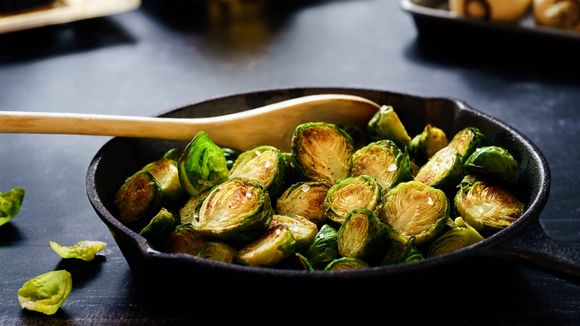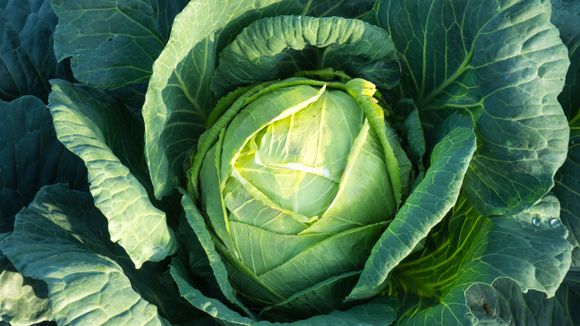Understanding DIM and Its Origins
DIM is a compound that is produced in the body when indole-3-carbinol (I3C), a substance found in cruciferous vegetables, is digested. These vegetables include broccoli (Brassica oleracea var. italica), cabbage (Brassica oleracea var. capitata), kale (Brassica oleracea var. acephala), and Brussels sprouts (Brassica oleracea var. gemmifera), amongst others. In the botanical world, these plants are revered for their rich nutritional profiles, including high levels of vitamins C, E, and K, fiber, and a number of potent phytonutrients.
The Potential Benefits of DIM
Hormone Balancing
DIM has been shown to potentially assist in maintaining a healthy hormone balance, particularly for estrogen. It appears to promote a more efficient metabolism of estrogen and may support the body's ability to shift the balance of estrogen towards its beneficial or "protective" metabolites (1).
Anti-Inflammatory Properties
Cruciferous vegetables, and by extension DIM, also harbor potential anti-inflammatory properties. A 2014 study demonstrated that DIM could suppress inflammation in the body by inhibiting a specific pathway known as NF-κB (2).
Anti-Cancer Properties
Perhaps one of the most exciting areas of research is the potential anti-cancer properties of DIM. Several studies have shown that DIM can induce apoptosis (programmed cell death) in various cancer cells, including breast and prostate cancer.

Photo by Sebastian Coman Photography on
Incorporating DIM into Your Diet
To fully harness the potential benefits of DIM, consider incorporating more cruciferous vegetables into your diet.
Here are two simple recipes to get you started:
Roasted Brussels Sprouts
- Preheat the oven to 400°F (200°C).
- Trim and halve a pound of Brussels sprouts.
- Toss them in olive oil, salt, and pepper.
- Spread them on a baking sheet and roast for about 20-25 minutes, until crisp on the outside and tender on the inside.
Kale and Cabbage Salad
- Thinly slice kale and cabbage.
- Toss in a bowl with olive oil, lemon juice, salt, and pepper.
- Let it sit for 10 minutes to soften the leaves.
- Sprinkle with your favorite nuts or seeds before serving.

Photo by Jac Alexandru on Unsplash
Questions and Answers
Q: Can DIM supplements provide the same benefits as consuming cruciferous vegetables?
A: While DIM supplements can provide a concentrated source of this compound, they may not offer the full array of nutrients found in whole vegetables. Furthermore, the body's absorption and utilization of nutrients from whole foods may be superior.
Q: Are there any potential side effects of consuming too much DIM?
A: As with any nutrient, balance is key. While DIM has many potential benefits, excessive intake can lead to side effects such as nausea, vomiting, and skin rash. It's always important to consult with a healthcare professional before starting any new supplement regimen.
Q: Can DIM help with conditions like Polycystic Ovary Syndrome (PCOS)?
A: While some research suggests that DIM may help balance hormone levels, more specific research is needed to confirm its efficacy in conditions like PCOS.
Q: Can men benefit from DIM, given its effects on estrogen?
A: Yes, men can also benefit from DIM. It can help maintain a healthy balance of estrogen and testosterone in the body, which can be beneficial for overall health.
Q: Can cooking affect the DIM content of cruciferous vegetables?
A: Cooking can indeed impact the nutrient content of vegetables. However, lightly steaming or roasting these vegetables can help retain their nutritional value, including DIM.
References
- Maruthanila, V., Poornima, J., Mirunalini, S. (2014). Attenuation of Carcinogenesis and the Mechanism Underlying by the Influence of Indole-3-carbinol and Its Metabolite 3,3′-Diindolylmethane: A Therapeutic Marvel. Advances in Pharmacological Sciences.
- Ronghe, A., Chatterjee, A., Bhat, N. K., Padhye S., Bhat, H. K. (2014). Antioxidant and anti-inflammatory activity of I3C and DIM in the context of a prostate cancer model. Free Radical Biology & Medicine.









